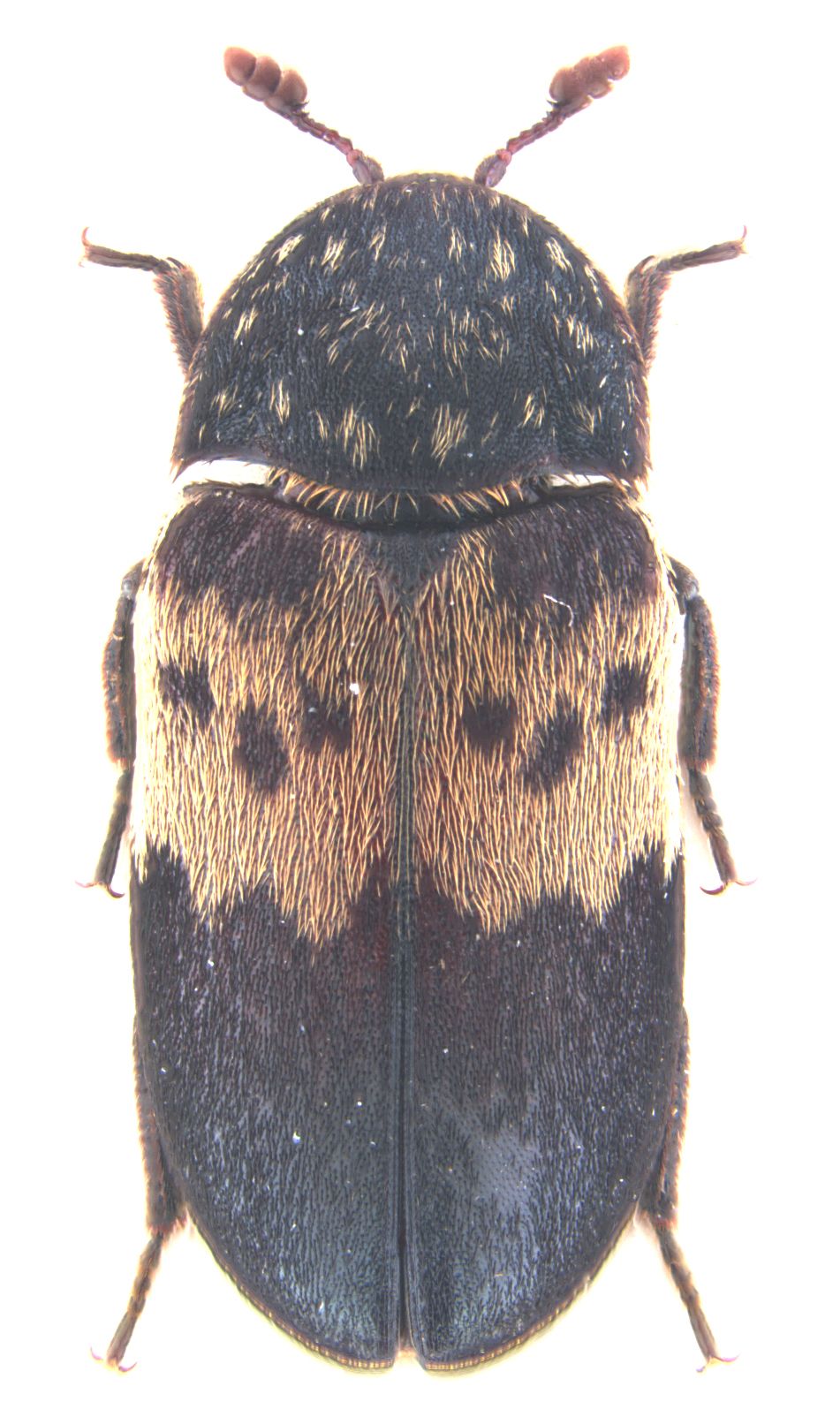Most Dermestidae species of economic interest are found worldwide. Men have carried them around unintentionally for several thousand years, maybe even tens of thousands of years.
About 30 Dermestidae species (84 are recorded in France) are likely to infest our museums, heritage premises, warehouses, houses,… provided that they can find the right food in them.
The Dermestes genus alone comprises more than a quarter of the species of the Dermestidae family in France, and though common in natural environments, it has the highest number of commensal species within the family.
Dermestes (literally “skin-eaters”) are mostly carnivorous and necrophagous, and their voracious, often cannibal larvae feed on bodies and remains of animals (bones, feathers, hairs, skin, flesh,…), on dessicated insects, on pupae or nymphs (see “Infested Materials” chapter). Though brisk and quick walkers, these insects are poor fliers, but they can spot food from very long distances (several hundred meters).
The Dermestes genus is easily recognizable thanks to its sturdy, elongate oval aspect and to the absence of a median ocellus on its forehead. Six more Dermestes species are described in fact-sheets in this website: D. Olivieri (= D. ater), D. carnivorus, D. frischi, D. maculatus, D. peruvianus and D. undulatus. Readers can refer to them for more information about those pests.
Larder beetles are dreaded hosts of museums and libraries containing old books. They preferentially seek skins and leathers, but can also be particularly harmful to animal collections (insects, stuffed animals). Although they have a necrophagous feeding diet, they can also develop on certain vegetal substrates.
The species was once quite frequent in rural environments, but the considerable evolution of foodstuff preservation caused its numbers to drop. In our houses, warehouses, heritage places,… this dermestes can live to the expense of various products and materials (see “Infested Materials” chapter).
Like several other Dermestidae, the larder beetle is a very useful forensic entomology indicator for the scientific police, for its presence on a body can provide valuable chronological information for determining when death occurred.
Together with D. Olivieri (= D. ater) and D. peruvianus, Dermestes lardarius belongs to the sub-genus Dermestes, whose species are characterised by a fine, scarce hairiness on the ventral face of their abdomen which allows for the dark cuticle to be seen.


 Dermeste du lard
Dermeste du lard  Larder beetle Bacon beetle
Larder beetle Bacon beetle  Dermeste del tocino
Dermeste del tocino  Gemeiner speckkäfer
Gemeiner speckkäfer 